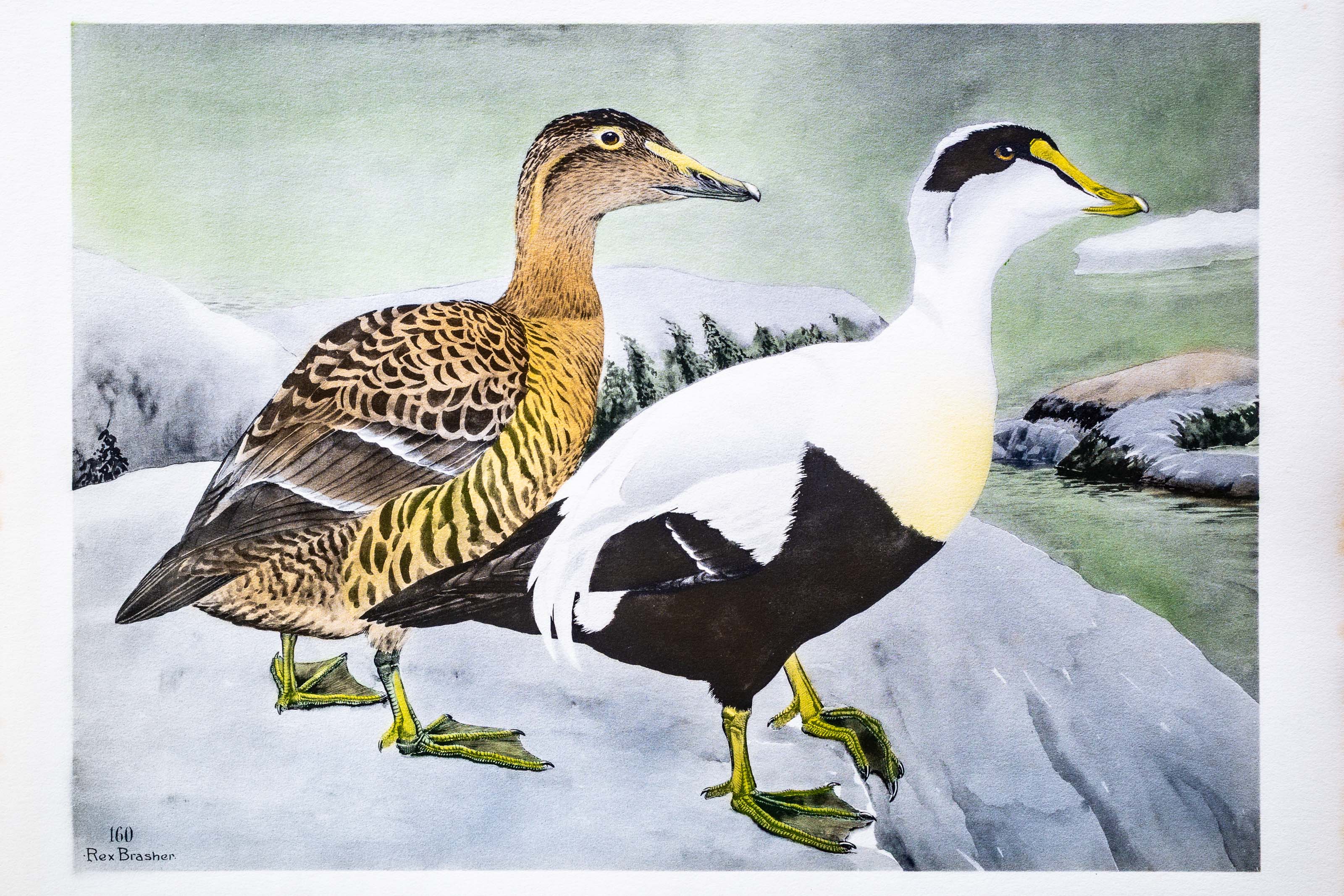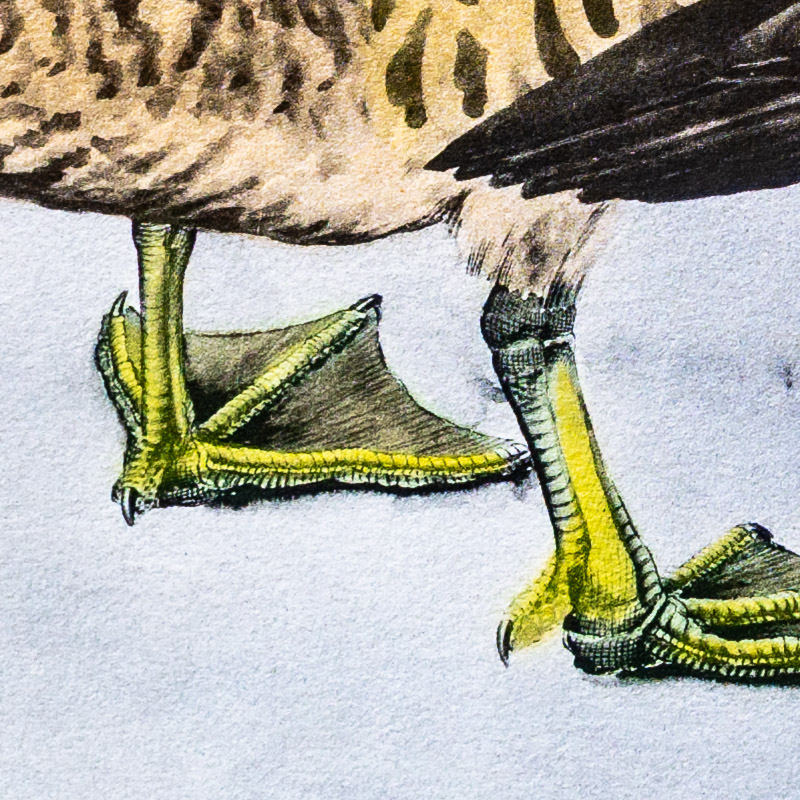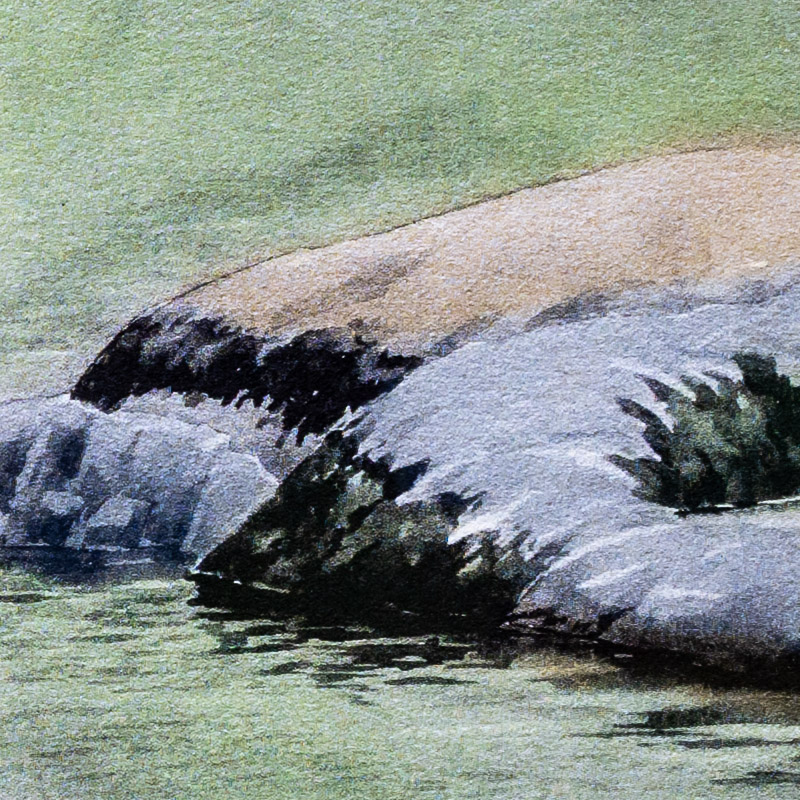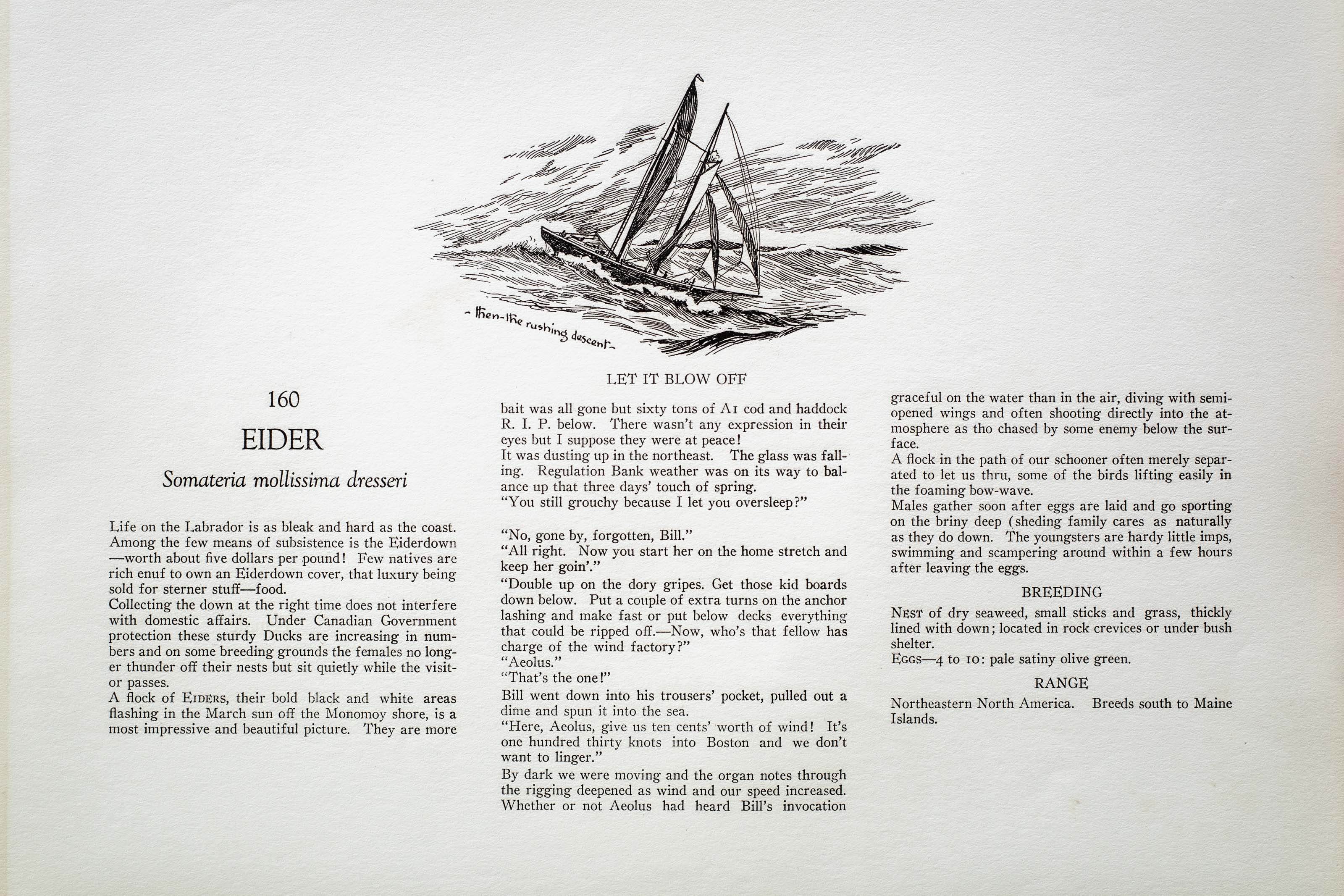






Unknown
1930
3
160
A team of dedicated board members, volunteers, and student interns has published every page in Volume 9. This volume includes 360 images of paintings and lyrical descriptions of birds, now available online for everyone to enjoy anywhere in the world. This is a monumental task. Each volume requires approximately 400 hours to photograph, edit, transcribe, catalog, and publish online. We need your support to complete this work.
If you're tech-savvy, have a good eye, are meticulous with details, and love structured data, please consider volunteering by emailing us at hello@rexbrasher.org.
We encourage all bird lovers and supporters to consider a monetary donation to support our mission to make Rex's work available for everyone. You can provide a one-time or recurring donation online.
Life on the Labrador is as bleak and hard as the coast. Among the few means of subsistence is the Eiderdown — worth about five dollars per pound! Few natives are rich enuf to own an Eiderdown cover, that luxury being sold for sterner stuff — food.
Collecting the down at the right time does not interfere with domestic affairs. Under Canadian Government protection these sturdy Ducks are increasing in numbers and on some breeding grounds the females no longer thunder off their nests but sit quietly while the visitor passes.
A flock of EIDERS, their bold black and white areas flashing in the March sun off the Monomoy shore, is a most impressive and beautiful picture. They are more graceful on the water than in the air, diving with semi-opened wings and often shooting directly into the atmosphere as tho chased by some enemy below the surface.
A flock in the path of our schooner often merely separated to let us thru, some of the birds lifting easily in the foaming bow-wave.
Males gather soon after eggs are laid and go sporting on the briny deep (shedding family cares as naturally as they do down). The youngsters are hardy little imps, swimming and scampering around within a few hours after leaving the eggs.
NEST of dry seaweed, small sticks and grass, thickly lined with down; located in rock crevices or under bush shelter.
EGGS — 4 to 10: pale satiny olive green.
Northeastern North America. Breeds south to Maine Islands.